calsfoundation@cals.org
USS Tyler
The 180-foot-long A. O. Tyler, a Mississippi and Ohio river packet named for its original owner, was the largest of three side-wheeled steamboats purchased by the United States War Department for conversion into river gunboats at the beginning of the Civil War. Navy commander John Rodgers, the purchaser of the craft, felt it inappropriate to call the boat Tyler since former President James Tyler was a leading secessionist, preferring instead to refer to the boat as Taylor for unionist Zachary Taylor. However, the name Tyler remained official. During the first year and a half of the war, the gunboat was under U.S. Army control as part of the Western Gunboat Flotilla—yet was staffed by naval officers—to provide artillery support for General Ulysses S. Grant in the Western Theater. By the end of the conflict, the Tyler would render service on the Cumberland, Tennessee, Ohio, Mississippi, Arkansas, Yazoo, and White rivers, spending the majority of its time on the waters in and around the state of Arkansas.
The river steamer was purchased for $20,666 in June 1861, in Cincinnati, Ohio, and remodeled into a platform for artillery following the design created by James Eads, a noted St. Louis, Missouri, river salvager and self-taught engineer. The four-year-old vessel—with a shallow six-foot draft and two high-pressure steam engines capable of eight knots against the current—was a worthy candidate for conversion to river warfare. The upper decks were removed and steam power machinery moved as low as possible. Decks were reinforced to carry weapons weighing over 6,000 pounds each. Bulwarks of white oak, five inches thick, were installed to provide protection for the gun crews from enemy musket fire. The crew of sixty-seven had little protection from a direct hit by a large cannon ball. Armament was adjusted throughout the war, but in January 1862, the gunboat was outfitted with six eight-inch smooth-bore cannons and one thirty-two-pounder. By the end of the war, the gunboat carried six eight-inch cannons, four twenty-four-pounder cannons, three thirty-pounder Parrott rifles, and one twelve-pounder. The Tyler became, and would remain, the most heavily armed timberclad of the Civil War.
During 1862, the Tyler gave conspicuous service on the rivers of the mid-South. In February, the gunboat participated in the capture of Fort Henry and Fort Donelson in Tennessee. At the Battle of Shiloh on the Tennessee River in early April, as Confederate victory seemed imminent, the Tyler and the Lexington initiated an all-night bombardment to unnerve the Rebels and hold off advances until Union reinforcements could arrive. The Tyler alone expended 200 rounds of explosive shells. In mid-July, the Tyler engaged the new Confederate ironclad CSS Arkansas on the Yazoo River in Mississippi. In October 1862, control of the Western Gunboat Flotilla was transferred from the army to the navy, with the new title Mississippi Squadron. Now as a naval war vessel, the Tyler officially became the USS Tyler.
In January 1863, Union forces attacked and captured Fort Hindman at Arkansas Post, and the USS Tyler participated in that success as an escort vessel for the troop transports. In July, Confederates attempted to retake the Union-occupied city of Helena (Phillips County) on the Mississippi River. During the Battle of Helena, the USS Tyler was a deciding factor in the Union victory, enfilading the attacking Confederates with 413 explosive shells.
Rear Admiral David D. Porter issued General Order 195 in May 1864 assigning patrol areas for each of the vessels of the Mississippi Squadron. The USS Tyler was placed in District Seven, which extended from the mouth of the Arkansas River to Memphis, Tennessee. In June, the USS Tyler assisted in the repulse of Confederate general Joseph Shelby’s attack on Federal forces in Clarendon (Monroe County) on the White River.
In April 1865 at war’s end, the USS Tyler was stationed at Memphis and rendered aid to the victims of the Sultana explosion and fire at Mound City (Crittenden County), the worst maritime disaster in American history. Later it was ordered to Mound City, Illinois, where it was sold at public auction for $6,000.
For additional information:
Anderson, Bern. By Sea and By River: The Naval History of the Civil War. New York: Knopf, 1962.
Bennett, Michael J. Union Jacks in the Civil War. Chapel Hill: University of North Carolina Press, 2004.
Canney, Donald L. Lincoln’s Navy: The Ships, Men and Organizations, 1861–65. London: Conway Maritime Press, 1998.
Gosnell, Allen H. Guns on the Western Waters: The Story of River Gunboats in the Civil War. Baton Rouge: Louisiana State University Press, 1949.
Hughes, Nathaniel Cheairs, Jr. The Battle of Belmont: Grant Strikes South. Chapel Hill: University of North Carolina Press, 1991.
Joiner, Gary D. Mr. Lincoln’s Brown Water Navy: The Mississippi Squadron. Lanham, MD: Rowman & Littlefield, 2007.
Miles, Jim. A River Unvexed. Nashville: Rutledge Hill Press, 1994.
Porter, David D. Admiral: The Naval History of the Civil War. Mineola, NY: Dover Publications, 1886.
Rye, Scott. Men and Ships of the Civil War. Samford, CT: Longmeadow Press, 1995.
Simson, Jay W. Naval Strategies of the Civil War: Confederate Innovations and Federal Opportunism. Nashville: Cumberland House, 2001.
Smith, Myron J., Jr. The Timberclads in the Civil War. North Carolina and London: McFarland and Co. Inc., 2008.
Still, William W., Jr. Iron Afloat: The Story of the Confederate Armorclads. Columbia: University of South Carolina Press, 1985.
Jack Myers
Delta Cultural Center
 Military
Military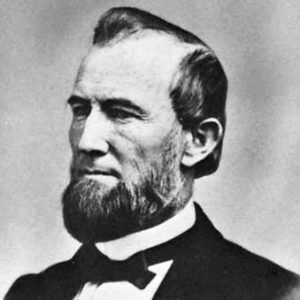 James Eads
James Eads 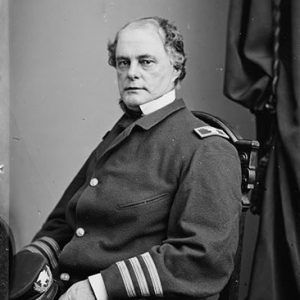 Captain John Rodgers
Captain John Rodgers 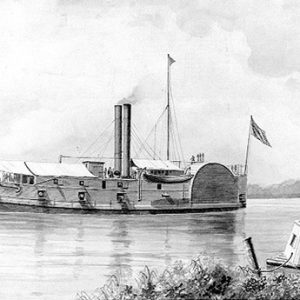 USS Tyler at the Battle of Belmont, Missouri
USS Tyler at the Battle of Belmont, Missouri 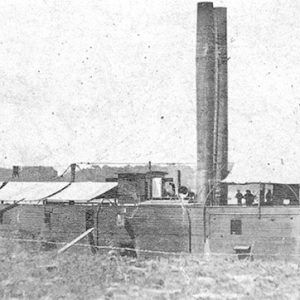 USS Tyler
USS Tyler 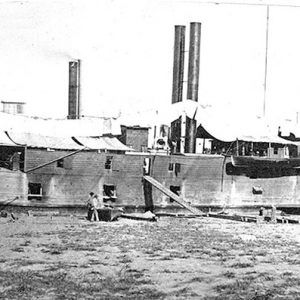 USS Tyler
USS Tyler 



Comments
No comments on this entry yet.